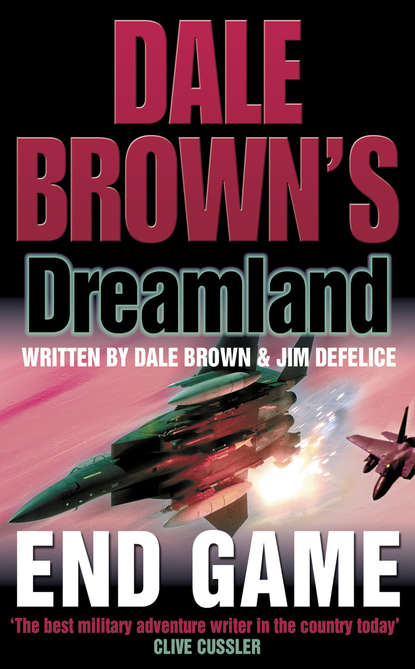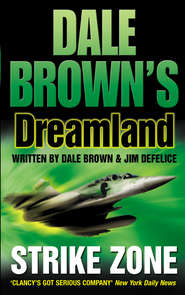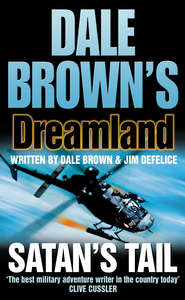По всем вопросам обращайтесь на: info@litportal.ru
(©) 2003-2024.
✖
End Game
Автор
Год написания книги
2019
Настройки чтения
Размер шрифта
Высота строк
Поля
The darkness had erased the line between heaven and earth, and even with his infrared glasses Captain Val Muhammad Ben Sattari had trouble finding the quartet of small aircraft as they approached the oil tanker. Built as civilian pleasure craft by a Russian company, the two-engined Sparrows were relatively quiet, their twin piston engines producing a soft hum rather than the loud drone generally associated with military aircraft. By the time the Iranian captain finally found them, the lead airplane was less than three hundred meters away, its hull planing through the water. The other three amphibious aircraft were in line behind it, ugly ducklings heading toward their rendezvous.
Four or five years ago Sattari might have looked on the tiny airplanes with amusement or even disdain. He was a fighter pilot by training and inclination, one of Iran’s best – when it still had an air force, before the black robes had run it into the ground. But with his new perspective and responsibilities, he saw the value of small, simple aircraft.
Sattari tucked the glasses into their waterproof pouch inside his tac vest and pulled the brim of his campaign cap down. Much depended on the night’s mission. It would test all of the components of the force he had built, putting them all in action to test their strengths, but also their weaknesses. For among the many hard lessons Captain Sattari had learned was that there were always weaknesses. Success required finding them before the enemy could.
Success also required the respect and unquestioning trust of the men who followed him. Both of which he would earn tonight.
Or die trying.
‘We’re ready to go, Captain,’ said Sergeant Ahmed Ibn, holding the captain’s AK-47 out to him. The ranking noncommissioned officer of the commando unit, Ibn’s skeptical sneer was as obvious and comfortable as his wet suit; with every glance he implied that at thirty-nine, the ex-fighter pilot was both too old and too soft to lead a team of young commandos.
Sattari checked the gun and slung it over his shoulder. ‘Let’s go then.’
Aboard DD(L) 01 Abner Read, off the coast of Somalia 1921
Lieutenant Kirk ‘Starship’ Andrews stared at the green-hued shadow near the lip of the Gulf of Aden. The shadow belonged to a boat seven miles away. It measured no more than thirty feet, with a low cabin toward the bow and a flat, probably open stern. Under other circumstances Starship might have thought it was a small fishing vessel or a pleasure boat. But no one sailed the Gulf of Aden for pleasure these days, and it was a rare fisherman who went out this late at night, let alone plied these waters near the tanker routes from the Persian Gulf.
Which meant the shadow was either a smuggler or a pirate.
Starship thought the former much more likely. He knew from experience that pirates tended to move in packs, with at least three and often as many as a dozen small boats.
‘Werewolf One to Tac Command, I have the subject in sight.’
‘Tac. Clear to proceed.’
‘Roger that.’
Starship leaned toward the screen as he pushed his hand against the Werewolf’s throttle bar. The procedure for checking out suspicious ships was straightforward: a high-speed run at low altitude, stem to stern (or vice versa), allowing the sensors aboard the Werewolf to get a good look at the target. After the first flyover the images were analyzed by specialists in Tac – officially, the Tactical Warfare Center, the nerve center of the Abner Read – who passed the information on to the tactical commander and the ship’s captain, who would then tell Starship what to do next. The Abner Read was about twenty-five miles to the southeast. Depending on what Starship saw, the ship’s captain would decide whether it was worth bothering to pursue.
The Werewolf was a UAV, or unmanned aerial vehicle, which Starship flew from a station in a corner of the Tac Center. Combining the agility and vertical maneuvering capability of a helicopter with some of the speed of a conventional plane, it looked something like a downsized Kamov Ka-50. It had diminutive wing-mounted jet engines and a tail to go with the two counterrotating rotors at the top. Its top speed, which Starship himself had never reached, was around 400 knots, more than a hundred knots faster than most helicopters.
The Werewolf was not a Navy aircraft, nor was Starship a sailor. Both the robot and Starship had been shanghaied from Dreamland two months before, following attacks by pirates in the Gulf of Aden. Easy to fly and versatile, the Werewolf had been pressed into service as a replacement for a Navy UAV that was at least a year behind schedule. The Dreamland craft had done such a good job that everyone from the ship’s captain to the Navy secretary sang its praises.
The same could not be said for Starship. He’d gotten this gig by being the right man in the wrong place. Already an accomplished Flighthawk pilot, he had made the mistake of cross-training in the Werewolf program so he could help out as a relief pilot during the testing program, which used mostly civilian jocks. When the Werewolves were rushed into duty with Xray Pop, Starship suddenly found himself the only military officer both qualified to teach others how to fly the craft and available for temporary duty aboard the Abner Read. Originally scheduled to last two weeks, the assignment was nearly six weeks old and showed no sign of ending soon. The Navy people rode him unmercifully, then turned around and claimed he was indispensable.
As the only Air Force officer aboard the Abner Read, he would have felt out of place in any event. But he particularly disliked the ship’s captain, whom in his more charitable moments he thought of as a blowhard. The tactical commander and ship’s executive officer, Lt Commander Jack ‘Eyes’ Eisenberg, was nearly as bad.
The Abner Read was a cutting-edge ship, a next-generation ‘littoral combat vessel,’ officially called a DD(L) for littoral destroyer. About the size of a corvette, it had the firepower of a destroyer but only a third of the complement. Supposedly, the officers and crew had been chosen as the most forward-thinking people in the service. Having come from Dreamland, Starship had a different perspective. And used to the much more easygoing and fluid procedures of Dreamland, he chafed at the ‘fussy’ discipline and stringent shipboard rules.
Starship had trained two sailors to fly the robot helicopter, but the ship’s captain insisted that he be at the stick during ‘prime time’ – the hours between dusk and dawn when the pirates were most likely to strike. That meant duty from 1600 to 0700 – or whatever stinking bells the Navy used to confuse landlubbers like himself. That might not have been so bad if he didn’t have to oversee the maintenance and ordnance people assigned to the aircraft during the day. It wasn’t their fault that they were unfamiliar with the systems – but it wasn’t his fault, either, though the captain seemed to think it was.
The image in the main screen in front of Starship sharpened. There were two large crates toward the stern; this was almost certainly a smuggler, bringing anything from canned goods to weapons into the northern coast of Somalia, despite UN strictures.
‘Coming up on him,’ Starship said. ‘Two crates. Uh, got, um, maybe a deckhand, only one person I see – smile for the camera, scuzzball.’
‘We can do without the color commentary,’ snapped Eyes.
Man, I am working with a bunch of old farts, Starship thought.
The Werewolf’s flight station, adapted from a control unit designed to be used by soldiers near the battlefield, had one large display screen and two smaller ones, all touchscreen panels. While they could be configured in a number of ways, Starship typically left the large screen as his main view screen, displaying either infrared or daylight video from the Werewolf’s nose. He usually put the system’s engineering panel in the top left-hand screen, toggling it with the weapons screen when appropriate. Below that he always put a God’s-eye-view map, generally referred to as a ‘sitrep,’ or situation report, map showing where he was and what was around him. The area the Werewolf flew over was rendered as a wire model, with green and red lines delineating the topography. The Werewolf was a stubby yellow double cross that, if you squinted just right, looked a little like the aircraft itself.
‘Tac, we have a tanker out here,’ said Starship, spotting a much larger vessel ten miles beyond the suspected smuggler. ‘Want me to check it out?’
‘Negative, Werewolf. We have him on the sonar array. One problem at a time.’
Starship reached for his cup of the crankcase oil the sailors claimed was coffee. As he did, the Werewolf’s flight control computer buzzed with a warning – the radar had caught sight of an aircraft approaching from the north. Before the pilot could react, the screen flashed a proximity warning – the airplane was heading at a high rate of speed on a direct vector toward him; he had thirty seconds to evade.
Starship pushed the Werewolf stick to the left, starting an easy circle away from the airplane’s flight path. The computer had been programmed to be overanxious so that the Navy newbies he was training didn’t fly into anything; he wasn’t really in any danger of a collision. But it was curious that the other plane was flying so low. As he banked parallel to its flight path, the radar caught sight of three other airplanes, all at very low altitude and obviously following the leader.
‘Tac, I have something unusual here. Four aircraft very low to the water, no running lights, no radar – can I follow them and find out what’s going on?’
‘Hold tight, Werewolf.’
Old farts.
Captain Harold ‘Storm’ Gale stared at the holographic display on the bridge of the Abner Read. The three-dimensional projection rose from a table behind the helmsman’s station and could be used for a variety of purposes. In this case, it was taking various sensor data to render a map of the area they were patrolling. The Abner Read, in green, sat at the right-hand corner. The smuggler the Werewolf had spotted – yellow – was toward the center, with the tanker another yellow block beyond it. There were no aircraft.
‘I don’t see any airplanes,’ Storm told Eyes. ‘You’re sure Airforce got it right?’
‘He has them on his radar,’ said Eyes.
Storm reached to the communication control on his belt, flipping into the Werewolf circuit. The wireless communications system allowed him to talk to all of the ship’s departments directly.
‘Airforce, what are we looking at here?’
‘Four unidentified aircraft, flying low and fast.’
‘What types are they?’
‘Not sure. I haven’t seen –’
‘Get closer.’
‘Tac just told me –’
‘Get closer!’
Storm flipped back to Eyes. ‘Have Airforce find out what the aircraft are.’
‘What about the boat, Captain?’
‘A single smuggler, no weapons visible?’
‘Affirmative, Captain. He’s twenty minutes away, at our present course and speed.’
‘Threat to the oil tanker?’
‘Doesn’t appear so.’








